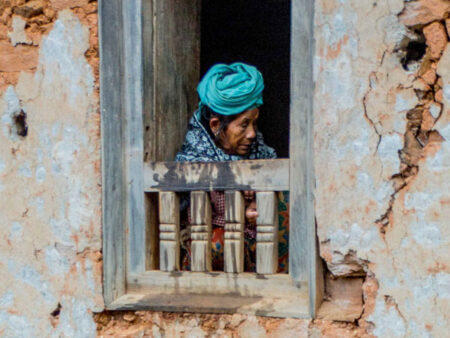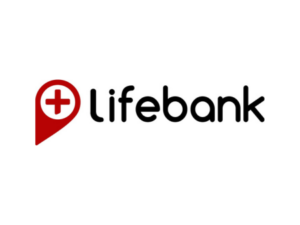
An Online Tool to Catch Workplace Sexual Predators
Callisto Campus has given students at 12 colleges a secure, online place to record the details of sexual misconduct and
Well-built housing can be the difference between life and death in an earthquake or other disaster. Build Change supports homeowners before and after in housing disaster relief by working with them and governmental officials, with a focus on shifting power and policy structures for enduring change.
Elizabeth Hausler of Build Change spoke with Lissa Harris on February 13, 2023. Click here to read the full transcript with insights highlighted.
Lissa Harris: Can you introduce yourself and your organization just a bit and talk a little bit about the problem that you’re addressing, and how you’re responding to it?
Elizabeth Hausler: I’m Elizabeth Hausler, I’m the founder and CEO of Build Change. We are a 19 year old social innovator and systems change catalyst in the field of disaster resilient housing.
As the world’s just witnessed, again, poorly built buildings can kill people in earthquakes. With the earthquakes in Turkey and Syria, I think the number is up to 35,000 people dead, this is a man-made problem. A hundred percent man made and completely preventable. The folks that died in that disaster died because their building collapsed on them.
We often say, it’s not the earthquake that kills people, it’s the collapse of a poorly built building. Build Change works to prevent those buildings from collapsing. We also work to rebuild after disasters. We work primarily on housing, and to some extent, on schools as well.
Lissa Harris: Who are the people that you’re directly serving, directly working with, and how do you engage with them?
Elizabeth Hausler: We engage with a lot of different stakeholders, from homeowners directly on the ground, to folks who have lost their houses or have the opportunity to improve their home, as well as from the very top. We work with stakeholders at all levels – national governments, city governments, building code committees. We also work with the private sector [who] usually ensures the delivery of decent housing, retrofitting, or building new. They are on the supply side.
But to stimulate demand for a better housing product, that work is primarily with two stakeholder groups, the homeowners, the house occupants themselves, as well as the government officials who have the possibility of incentivizing disaster resilient housing and enforcing it with building regulations.
Lissa Harris: You’re really working at a lot of different scales on this problem, from the micro scale to a macro scale at the government policy level.
Elizabeth Hausler: Exactly. That’s part of the systems change work of Build Change. Housing is complicated. It’s messy. It requires policy change, it requires access to finance, it requires technology, building technology, as well as information technology. It requires the participation, more so the leadership, of the people who actually live in the houses. We do all of those things.
We work on policy change, we work on access to finance, we work on technology platforms, we work on engineering, design, and construction solutions. But all of it is driven by the people themselves. What Build Change really does is shift power. We shift power into the hands of the homeowners by enabling them to make decisions that work best for their family’s safety and health. We facilitate access to financing, we create a policy environment that works with them. We connect them with financing and enable women, especially, to drive the process.
It’s their asset, it’s their wealth, their family that is being protected from loss and disaster. It’s also their wealth being protected. Again, I say we work on disaster resilient housing, but we actually shift power. After that, we really protect wealth. We have helped to protect about $4 billion of housing assets around the world. Those assets are held in the hands of the homeowner. They’re not something that we own. They’re not something that a big corporation owns. It is homeowner wealth. By strengthening those buildings, we help to protect them from loss.
Lissa Harris: Can you talk about what makes your approach distinctive, how you’re different from other organizations or entities in the space that you’re working in?
Elizabeth Hausler: The first thing that’s made us distinct in the early days was we shifted the industry, the post-disaster relief industry, away from just giving someone a house, to empowering them to make the decisions. In the early days, NGOs would come in and they would just give someone a temporary house, or they would give someone a permanent house. They would exclude the homeowner from the process. They wouldn’t be involved in deciding where is the kitchen, where is the door, where’s the toilet? Those sorts of things.
We’ve helped to shift the industry away from that approach, to a homeowner driven conditional cash plus technical assistance approach. That basically means the homeowner is making decisions about materials and architecture. They’re handling the cash, they’re paying the builder. We are providing technical assistance. [The financial assistance] is conditional. You get one tranche, you build a foundation. If you use it on a motorcycle or something like that, you don’t get the second tranche, but that rarely happens. It’s a way of enforcing building standards in an environment that’s difficult.
We’ve helped to shift the industry away from the give a house away approach to an approach that empowers people. The second thing that makes us unique and innovative in this field is that we have strengthened existing damaged buildings in environments where people thought it couldn’t be done. For example, after the 2010 earthquake in Haiti, there were a lot of damaged buildings that could be repaired and strengthened. We’ve proved to the world that this could be done. No one thought it could be done. They thought it was too difficult, too expensive, too complicated. Now we’ve been doing it around the world, both after disasters as well as before.
You can see behind me, this is a city in Medellin. It’s Medellin, Colombia. It’s a place where there’s a lot of vulnerability to disasters, and we’ve been working steadily with the Colombian government and city governments to strengthen existing housing before the next disaster. Proving a model to retrofit existing housing in an informal context like this is something that makes Build Change unique.
Another distinguishing factor for Build Change is that we have a holistic model. We do access to finance, we change policy, we build the technical platforms, we do the engineering. We train people to do this construction. We don’t do that ourselves, but there are a few organizations that really see the whole picture on housing. It’s a complex one, for sure. There are organizations that do the financing. There are organizations that write building codes. But Build Change brings it all together because without bringing it all together, we’re not going to see change at scale.
Lissa Harris: Can you share an example that illustrates the impact of the work that you do?
Elizabeth Hausler: We’ve got four proofs of concept around the world, situations where we’ve built or retrofitted a house, and there has been a subsequent earthquake or typhoon or flood. In every case, our houses performed flawlessly while there were other houses that were not improved that did not perform well.
In terms of specific examples, in Honduras, we have a program where we are adding second stories to homes in flood-prone regions of the Soula Valley. These were hit by hurricanes Etta and Iotta a few years ago. It’s a climate resilient solution. Adding a second story enables a homeowner to have a safe space to wait to be evacuated if that’s needed, to store their belongings, to have an electrical supply, to have food and water. Adding a second story doesn’t seem like anything that’s too innovative, but not everyone has access to the financing to be able to do that.
In Colombia, we’ve been operating at a much larger scale, to the point that our work reached a hundred thousand homes last year in partnership with the government. That’s 500,000 people that are living in safer housing because of our work and the work of our partners. In this case, we did everything from showing it’s possible to retrofit a building to unlocking bottlenecks in the building permit process. There can be a lot of paperwork involved in building permitting. Now it’s much, much easier in Colombia to access financing and increase the bundling of subsidies.
Colombia’s had a subsidy program for improving housing on the books since long before we were there. They’ve had competing subsidies, like you had to choose between the kitchen and toilet subsidy or the structural strengthening subsidy. Of course, if my toilet wasn’t working, I would choose that one. By bundling these subsidies together, we can incentivize folks to strengthen the house to withstand the next disaster.
We’ve also been working on a second story expansion program there as well, which again, reduces urban sprawl, has less impact on the climate, and is lower cost. The process for doing that is a hundred percent digitized within the government, within the city government. We’ve started with a complex housing problem, and we’ve created the technical platform in order to make it easy for the government and the private sector to implement on their own.
Lissa Harris: What do you think are the insights, the teachable lessons, that can be taken from your work that others might be able to use?
Elizabeth Hausler: I go back to the holistic solution. Build Change has this theory of change around people, policy, money, and technology. The people have to want whatever it is we’re selling. They’ve got to want to upgrade their house. The policy environment has to be there. Access to financing also has to be there. If there’s not financing, whether it’s a subsidy or a loan, it’s going to be very hard to implement. Then technology underpins it all, whether that’s engineering technology or technology platform. That’s our theory of change. This can apply to so many problems, enabling the people to lead, the policy environment, access to financing, and technology platforms
A couple years ago we produced the Build Change Guide to Resilient Housing, which you can find on our website. It goes into that in depth in this theory of change as it applies to housing. I think other people who are innovating in other fields can use this, because these things are necessary for change to happen at scale. That’s the first lesson I’d share.
The second one is about prevention. Prevention, prevention, prevention. An ounce of prevention is worth a pound of cure. I’ve gone through various emotions this week with the earthquakes of Turkey in Syria. What if we had been in Turkey and been working with folks to retrofit those buildings before that disaster? It would’ve changed everything. I think I have a message for the funder community about urgency. There’s no time like the present to invest in strengthening existing buildings, because if we don’t, we’re going to have disaster after disaster after disaster like this. It’s cost effective to do so.
We have invested about $3 million of philanthropy assets in our work in Colombia. We expect that the government is going to invest over $3 billion in the subsequent years. The leverage is huge. A very small philanthropic investment in the policy change, the access to financing, the technology platforms can unlock a huge amount of funding from government sources.
Another lesson is patience. We surpassed over a hundred thousand buildings in Colombia last year and it’s taken us seven years to get to that point. Systems change takes time, but it’s worth it. As I mentioned before, these systems are now embedded within various different levels of the Colombian government. Ultimately, it comes down to shifting power. I think people look at Build Change and they think we’re very technical. We’re engineers, and we’re talking about building codes, and we’re talking about financing, but really what we’re really talking about is putting power in the hands of the people, so that they can make the decision and access the financing that they need to keep their families safe.
Really, it’s about women. Housing is a women’s issue. Over 97% of our clients in the Philippines are women. They are borrowing money to strengthen their homes, and they have a 99% repayment rate. We’re working with existing microfinance partners who have an existing client base that they trust. They’re providing a lending product for folks to strengthen their house incrementally to withstand earthquakes and typhoons there. It’s just remarkable to see the outcomes of this program.
Lissa Harris: What are the metrics that you use to measure your success, and what is the evidence that you’re making progress?
Elizabeth Hausler: Our main metrics are the number of people living in safer housing and learning in safer schools, and the number of safer schools and buildings. We’re over a million in terms of the number of people who are living and learning in safer schools and houses. Then the number of buildings is over 200,000. Those are the two main metrics. We also look at things like the amount of assets protected. We’re over 4 billion in housing assets protected from disaster. We also look at policy changes. How many policies have been influenced or changed?
Things like I had mentioned previously, the bundling of subsidies in Bogota, we look at things like building code changes, and permitting process changes, and those process changes that are a little bit less tangible. It’s not the same as a person living in a safer building, but they’re so critical on this path to scale. We have to overcome all of these barriers.
We also recently added some new metrics, carbon emissions reduced and hectares of land saved. In our second story expansion, this prevents urban sprawl. We can track the number of the amount of land saved and the number of the amount of CO2 emissions avoided. It turns out if we retrofit an existing building, we can save 60% CO2 emissions compared to building new.
Lissa Harris: Every social innovator learns as much from things that didn’t work as things that did work. Do you have an example of something you tried that didn’t work that you have learned from or that others could learn from in this field?
Elizabeth Hausler: In the early days, we did some training programs, which were good. Training builders, training engineers, that sort of thing. They built capacity, but they did not create an earthquake resistant or disaster resilient home, because the financing to do that wasn’t there. As we’ve grown, we’ve sort of avoided doing training programs in a bubble. A training program just for the sake of training, we don’t really do those anymore.
If we don’t have the government or someone providing the financing, if we don’t have the policy environment that makes it work, we can train builders to build disaster resilient houses, but there’s no demand for that product. We no longer do training in a bubble. We still do training, but it’s always embedded into a larger program.
Lissa Harris: Clearly finance is another huge piece of this, and everybody working in the social change space is facing the challenge of raising sufficient funding. Aside from funding, are there other challenges that you’ve faced that you haven’t yet been able to overcome?
Elizabeth Hausler: Our PMT – people and policy, money, and technology – theory of change applies to the organization as well. If we don’t have all those three things, then it doesn’t work either, and hiring and retaining good people is a challenge. I think we’ve been going through a bit of a growing pain lately, because we’ve got a fantastic team, but we’ve been expanding. I think it’s been more of a challenge to bring in new people on the team than it has been to grow them from within.
We’ve been reflecting on that a little bit lately. What is Build Change’s path to scale, and how do we create a pipeline of even more incredible people on our team? We’ve got a fantastic team right now. I wish I could just clone everyone.
Lissa Harris: That’s all happening in the context of the growth of the organization? You’re really having to scale up and train new people?
Elizabeth Hausler: Yeah, we want to scale up. We’ve got some pretty ambitious growth plans. We’re just about to enter two or three more countries, with Turkey and Syria as well. We’re looking at Africa now, we may do some work in Comoros, in an area that was hit by Typhoon a few years ago. We have ambitious growth plans. There’s 3 billion people in the world who are either living or destined to live in disaster vulnerable housing by 2030. Three billion people. It’s like a third of the population that does not have a house that’s able to withstand the next disaster, let alone having health, water, sanitation, a roof that doesn’t leak, those sorts of things.
There’s a lot to do. Being able to build out the team is something that we’ve been thinking about a lot. We’ve got absolutely fantastic proximate leaders. Most of our leaders are from the countries where we work. Most of them are women, but being able to double and triple that team size rapidly is a challenge.
Lissa Harris: You’re working in a lot of different political environments at once, and a lot of different fronts at once. Has political opposition or public reception been an issue for you anywhere? Is that a challenge that you face in the field?
Elizabeth Hausler: Sometimes for sure, but it’s housing. It can be less political than some other causes. One of the things I’m so proud of in Colombia is that the National Home Improvement Program, which we’ve been supporting the Colombian government to implement at the national level, has continued from one presidential administration to another. These are presidents who are completely opposite in terms of political ideology. President Duque’s administration launched the program. They did a hundred thousand houses in his tenure, it was a great partnership. President Petro, who has come into office, is continuing the program and wants to do a hundred thousand units per year.
That’s huge. We’ve seen this program be able to transition between governmental administrations. Making it about housing and about the systems change has been better than making it a political issue. We do occasionally face pushback, but it’s more from developers than government. Once they see that we’re not actually competing with them, we’re not taking away from high-rise buildings and other buildings that are being built through the developer environment, it tends to be less of an issue. There is opposition for sure, but it comes from different sources than you might expect.
Lissa Harris: Was that a surprise to you when you went into places, that was where opposition was coming from? Or was that kind of a known quantity?
Elizabeth Hausler: It was pretty much known. This is, again, part of the reason why Build Change promotes the homeowner driven conditional cash plus technical assistance model, and putting the money in the hands of the homeowners, because there’s less opportunity for corruption. Construction is one of the industries most prone to corruption on the planet, I think. It’s easy for a big contractor to skim cement out of the mix or not put enough rebar.
When we’re putting the money in the hands of the homeowner and we’re enabling the homeowner to oversee the process, especially a woman, we tend to have a better outcome. That was not anything that I was unaware of, but it is a serious issue. I am sure as we continue, as the world continues to sift through the rubble in Turkey and Syria, there will be evidence, if there’s not already, of those kinds of issues contributing to the loss of life there.
Lissa Harris: You spoke about this already a bit in the context of building code and policy change, but can you talk a little bit about how you’re working to advance system level change in your field?
Elizabeth Hausler: I think by sharing the model, the PMT model, I’m hoping it’s going to influence other innovators in similar spaces. Being an engineer, it really did start out with the T side for all of what Build Change does. Even though we are aware that the money had to be there and the policy change aspect, but the more time has gone on, I feel so strongly that all three of these elements need to be there.
We have also partnered with the World Bank and other multilateral and global organizations in the fields of disaster resilient housing, climate resilient housing, healthier housing. We are working to influence their programs as well. In 2018, we supported the World Bank to launch the global program for resilient housing, which at the time was a new business line for the World Bank. The World Bank had been working mostly on new housing after disasters, as well as hospitals and schools to withstand disasters.
We came with various parts of the model already developed on how to improve existing housing. They’re on board and they’ve been implementing lending products to improve existing housing in multiple countries now. Influencing these key stakeholders who have the money, that’s really critical here.
We asked ourselves, “Well, where’s the money?” It has to come from the World Bank, IFC, governments themselves, those sorts of things. We went after those institutions as demand creators.
Lissa Harris: What do you think is most needed from other actors, from partners, from other entities in the space to really advance systems level change in your field?
Elizabeth Hausler: Money from philanthropists. Build Change has been operating for 20 years. We probably are going to have a budget between $4 and $5 million this year. It’s not very much money. Again, with this sort of grief going on in Turkey and Syria, I’ve been asking myself if we would’ve gotten to that $15 million, $20 million level five years ago, would we have been in Turkey by now? I think philanthropists don’t understand how highly leveraged their investment can be. Like I said before, $3 million invested in philanthropy to do the technical systems, to build the market to the systems change in Colombia, and then the government puts in $3 billion, the leverage is huge.
That is really the biggest need right now, for philanthropic investment to cover the messy stuff, to cover the systems change, the technology platform development, the support of the national institution that develops a building code. It’s their code, they should do it. We’re just supporting them to do that, to train the government officials, all these messy things that the government is probably not going to directly procure themselves that we need to pay for through philanthropy. That’s the biggest need right now.
Lissa Harris: How do you see your work evolving over the next five years?
Elizabeth Hausler: We’re scaling in several countries at the moment and there’s still more work to be done in Colombia. There’s a lot of work we’ve done in urban areas, the second story expansion I mentioned, and support of the Plan Terasas program in Bogota. There are more types of buildings that need to be strengthened in Colombia and there’s an expansion to the rural areas that’s necessary. Most of our work in Colombia has been in urban, densely populated areas.
There’s a whole world of rural opportunity in Colombia, and this is a priority of President Petro’s administration, continuing to scale the work in Colombia so that everyone has a disaster resilient house. I mentioned briefly, our work in the Philippines, which is very similar in that it has the same people policy, money, and technology model, but the money comes from a different source. Instead of a government subsidy, it’s a microfinance loan. Like I mentioned before, the majority of clients are women. They’re amazing in terms of their repayment rate, but this again, is still operating at a pretty small scale.
Our partners did about 480 houses last year, and there are millions of folks in the Philippines who can avail this loan. Scaling that out is a priority over the next five years. It will take at least five years to rebuild in Turkey and Syria. This is a new addition to Build Change’s portfolio as of last week. We will be looking to influence how the reconstruction is done, again at the very top level, hoping that folks are open to conditional cash plus technical assistance rather than giving away houses. [We want to] influence the reconstruction of homes in a way that they are earthquake resistant, and in a way that those processes can be used in other parts of Turkey to retrofit buildings before the next disaster.
Colombia, Philippines, Turkey, and Syria. Then we also have some other programs around the world that are more consulting, so more like opportunities to influence a government’s trajectory in a certain way, to implement a resilient housing program from the start, or to be able to improve or expand one that they already have. Indonesia has both. Indonesia’s kind of the meld of the Philippines and Colombia in that it’s got a government subsidy as well as a blooming microfinance market. We are expanding our work in Indonesia.
Indonesia’s our longest running country. We’ve been there since shortly after the tsunami of 2004. We’ll end up operating in eight or 10 countries this year and continue to expand worldwide.
Lissa Harris: Do you do any work in the US? I ask as somebody who lives in a rural flood damaged place with a lot of old housing stock and a lot of disaster related challenges.
Elizabeth Hausler: I’m glad you asked about that, because I forgot to talk about the US expansion. Yes, we are doing some work in the United States, it’s a little bit slow going. We’re doing mostly advocacy, advocating within some of the FEMA circles as well as some other circles to do the same kind of bundling of interventions. I find in the US, as I look at the market, there’s flood people, and there’s the earthquake people, and there’s the wind people. It would be better if everyone got together and made a holistic home improvement. We are getting started in the US. We don’t have any programs on the ground yet, but we are doing advocacy.
Lissa Harris: Is there anything that we didn’t get to that you think is really important to add that we talk about?
Elizabeth Hausler: I think we covered it all. Shifting power. Ultimately that’s what Build Change does. Systems change work, being messy, expensive, requiring patience, those sorts of things.
Click here to read the full transcript with insights highlighted.
Lissa Harris is a freelance reporter and science writer (MIT ’08) based in the Catskills of upstate New York. She currently writes about climate, energy, and environment issues from a local perspective for the Albany Times Union, her own Substack newsletter, and various other digital and print publications.
* This interview has been edited and condensed.
Check out other organizations implementing social change in the disaster relief industry.


Callisto Campus has given students at 12 colleges a secure, online place to record the details of sexual misconduct and

Riders for Health Nigeria works to improve the capacity and efficiency of health care delivery systems in Nigeria by ensuring

Catalyst 2030 facilitates collaborations around the world to work towards achieving the UN Sustainable Development Goals. Jeroo Billimoria of Catalyst

Grantmakers for Girls of Color is a philanthropic organization that cultivates and mobilizes resources to support transformative organizing work that

LifeBank uses technology and innovation to provide access to critical medical supplies to hospitals.

Monitoring usage incentivizes water-intensive companies to develop water-saving techniques. Boston-based nonprofit, CERES, helps companies like Pepsi and Levi’s develop more